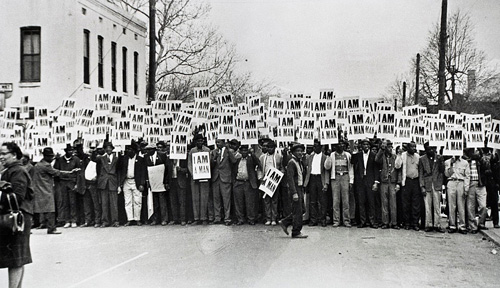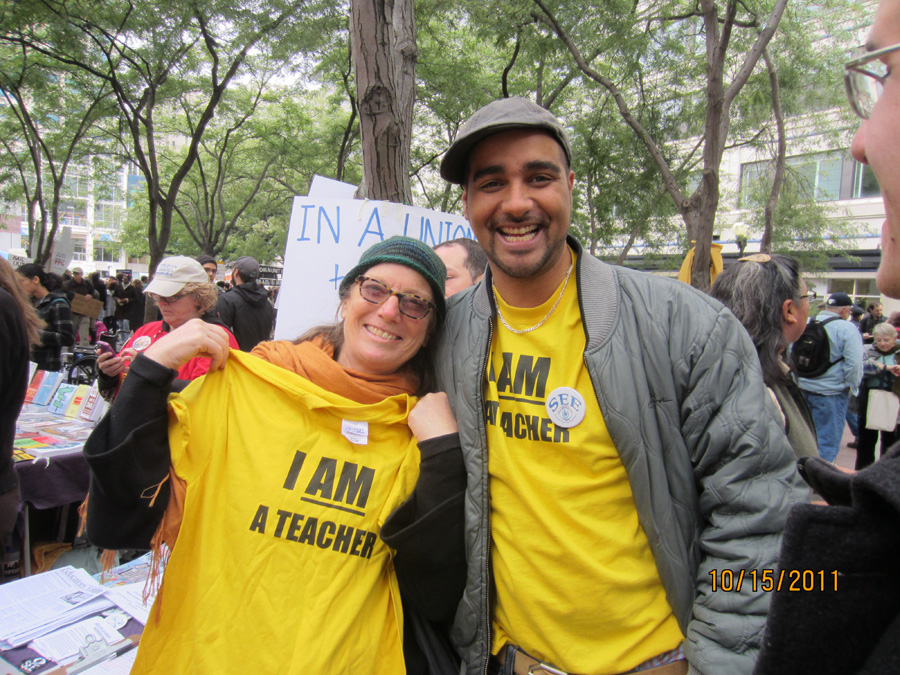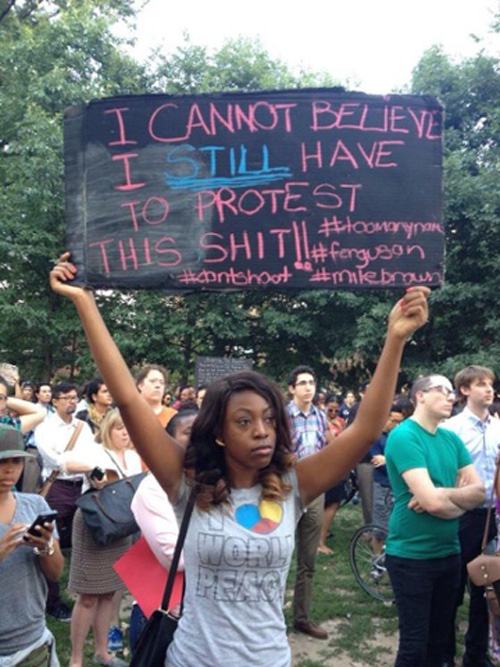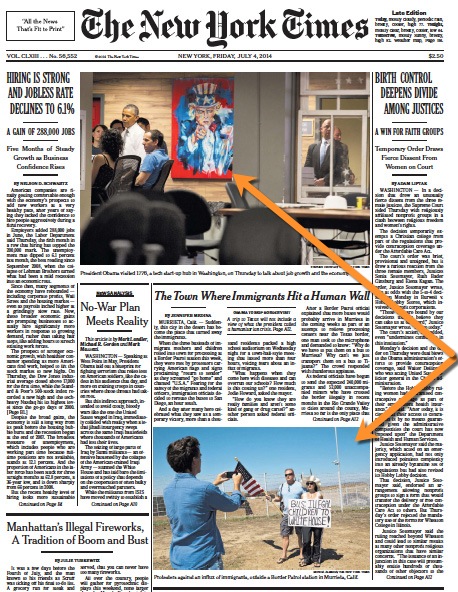Follow-up, Part II


“It wasn’t just that sanitation workers in Memphis were being improperly paid or overworked or that they didn’t have the respect of the community. In Memphis, TN, that year, black sanitation workers were not allowed to seek refuge from the rain inside the cab of the garbage trucks they worked on, only in the back of the truck where the garbage went — the compressor unit where you throw the garbage in and a steel panel comes down to shove the garbage inside the truck and compresses it. That’s where black workers could come in from the rain when it rained. You couldn’t get in the cab of the truck if you were black. Two of those men, Echol Cole and Robert Walker, on a rainy day in Memphis, had been crushed to death in a mechanical malfunction. That’s why King went to Memphis.” (Examiner.com)
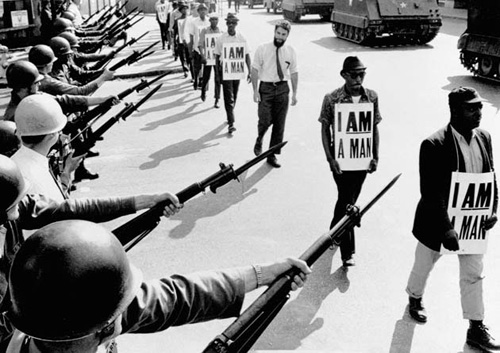
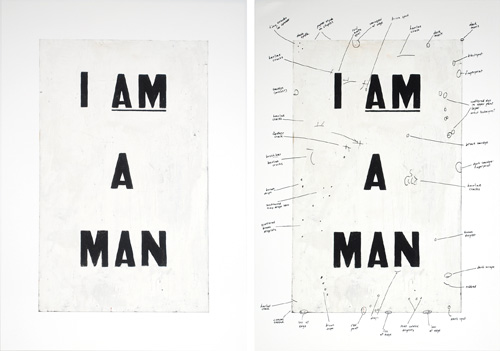 “Ligon is best known for intertextual works that re-present American history and literature, in particular narratives of slavery and civil rights, for contemporary audiences. His work engages a powerful mix of racial and gender-oriented struggles for the self, leading viewers to reconsider problems inherent in representation.
“Ligon is best known for intertextual works that re-present American history and literature, in particular narratives of slavery and civil rights, for contemporary audiences. His work engages a powerful mix of racial and gender-oriented struggles for the self, leading viewers to reconsider problems inherent in representation.
Untitled (I Am a Man) is just such a representation—a signifier—of the actual signs carried by 1,300 striking African American sanitation workers in Memphis, made famous in Ernest Withers’ 1968 photographs. Prompted by the wrongful deaths of two coworkers from faulty equipment, the strikers marched to protest low wages and unsafe working conditions. They took up the slogan “I Am a Man” as a variant on the first line of Ralph Ellison’s prologue to Invisible Man, “I am an invisible man.” By deleting the word “invisible,” the Memphis strikers asserted their presence, making themselves visible in standing up for their rights. Martin Luther King Jr. traveled to Memphis to address the striking workers; the next day, he was assassinated.
This painting is Ligon’s most important and iconic work. As the first object in which he used a selected text, Untitled (I Am a Man) is his breakthrough. He took pains to differentiate the painting from the original signs, avoiding a one-to-one relationship by reorganizing the line breaks. And while he preserved the original black-on-white of the sign, his choice to paint the black letters in eye-catching enamel calls attention to a black figure (“Man”) as a text that replaces the human form in figurative painting. Throughout his career, Ligon has used “blackness” as a trope for both personal and collective experience. As Ligon has said (paraphrasing Muhammed Ali), “It’s not about me. It’s about we.” The deliberately rough surface of the painting, which Ligon later documented by having a condition report made as an ancillary work of art, seems to index the scars and struggles of the work’s great subject.” (National Gallery)






